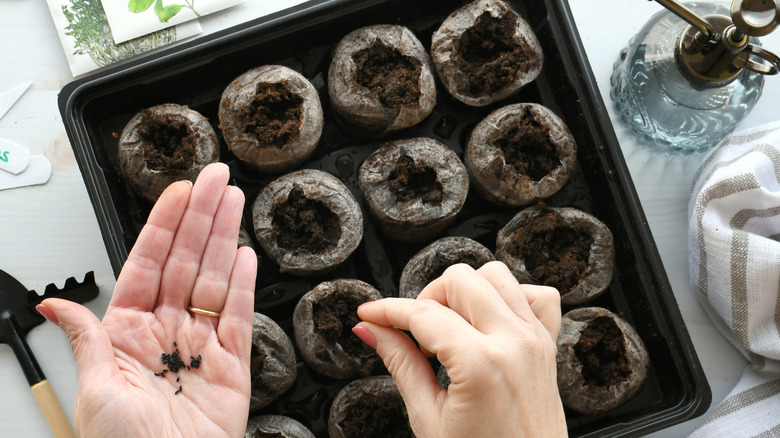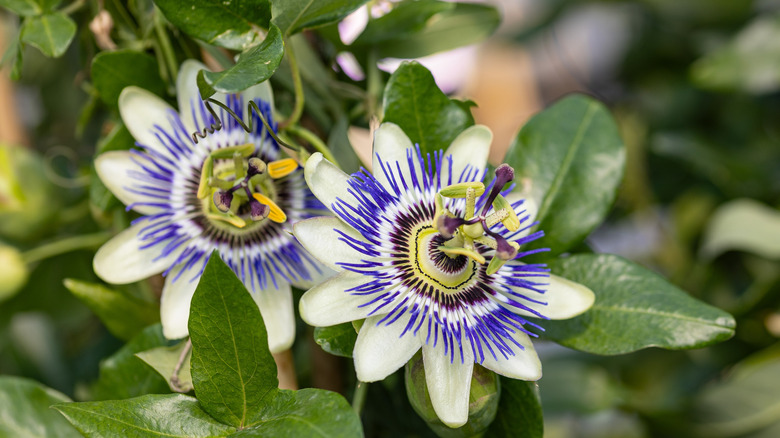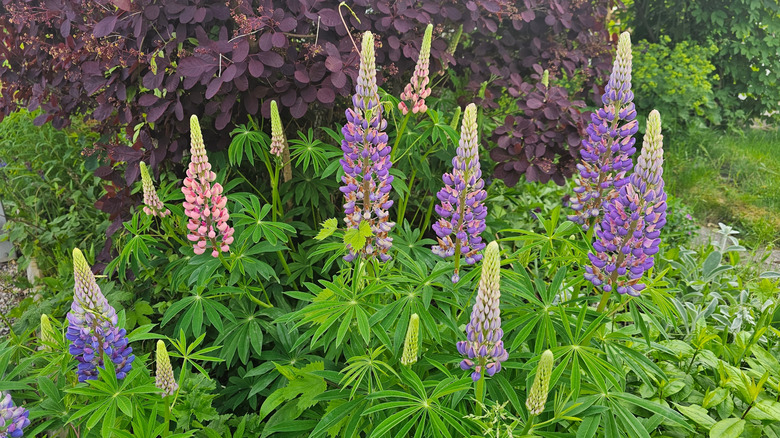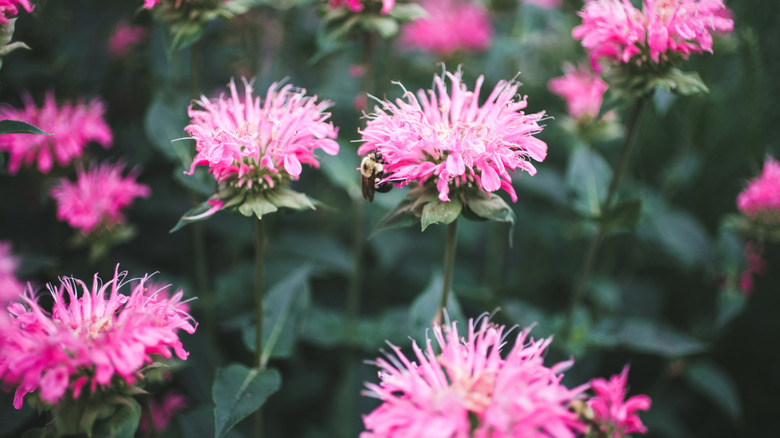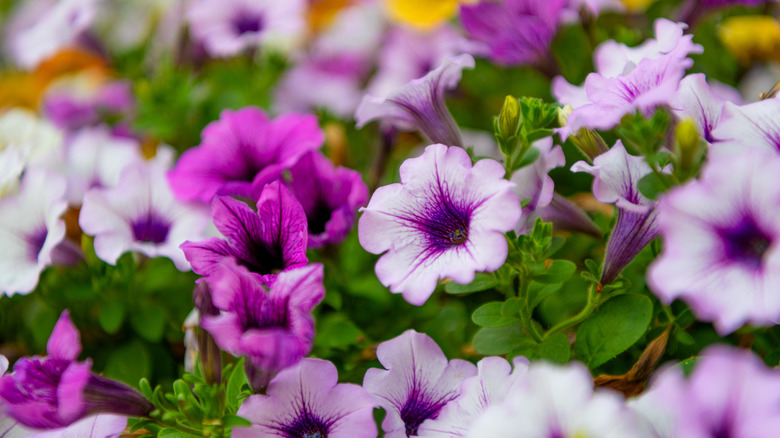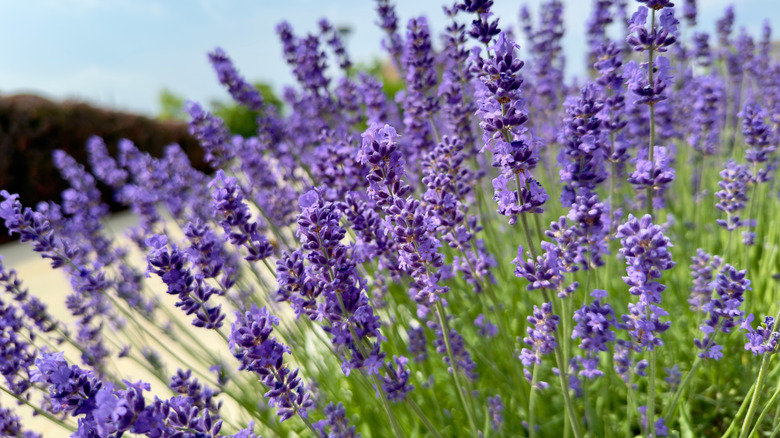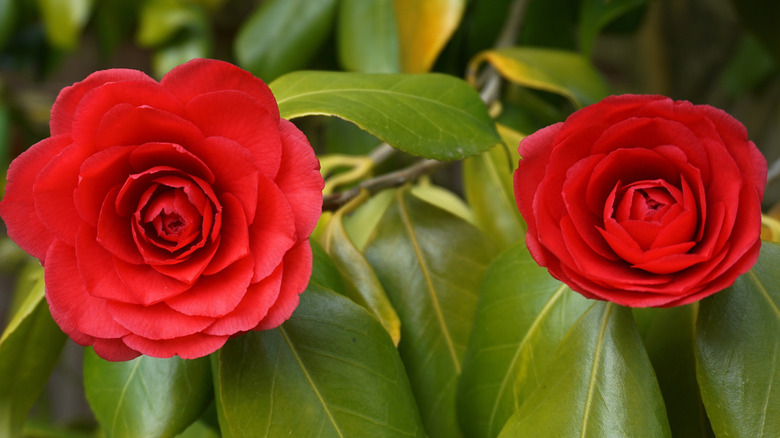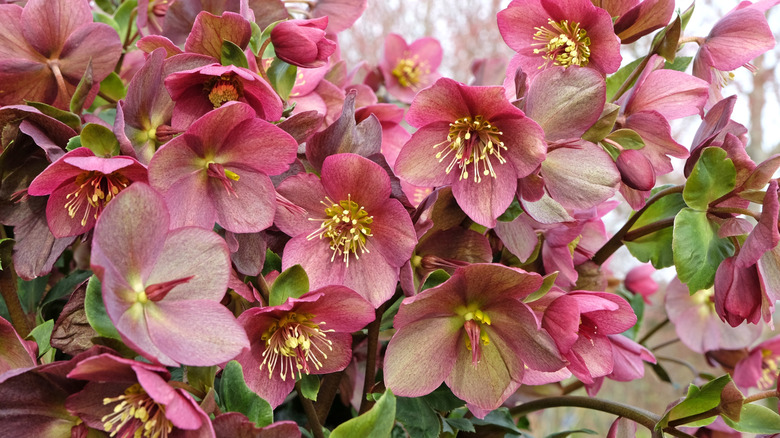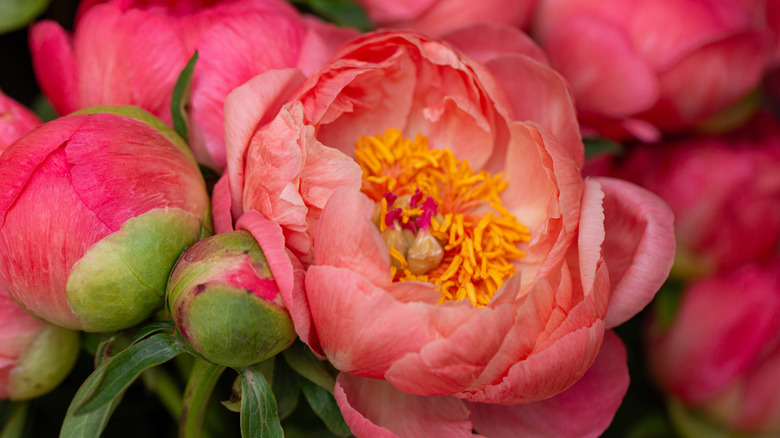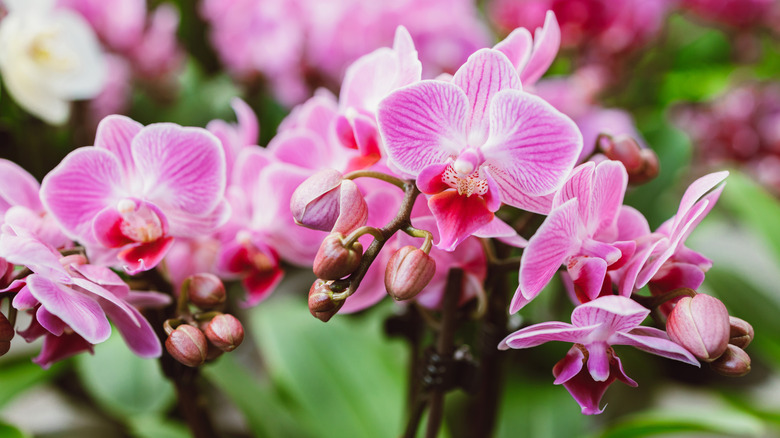10 Flowers That Aren't Worth Growing From Seed
We all get suckered into the romantic idea of raising a perfect garden from a few tiny seeds, but let's be honest, some seeds are just divas. They demand weird temperature swings, refuse to sprout unless you pretend it's winter for three months, or take so long to grow that you forget you even planted them. It's a setup for failure, and it's not your fault. So, we're officially giving you permission to just say "hard pass" to some select flowers.
We've made a list of 10 flowers that are notoriously difficult to grow from seed and aren't worth the therapy bills. For each one, we'll explain why it's such a pain and recommend a few awesome, easy-to-grow alternatives that give you the same vibe, without the existential crisis. We'll even walk you through how to grow the easy ones, just to prove how enjoyable gardening can be when you aren't fighting a losing battle from day one.
Passionflower can take 10 years to flower
If you've ever seen a passionflower (Passiflora caerulea), you know why people want to grow it. The flowers are so complex and alien-looking you'd think they were AI generated. But here's the un-glamorous reality: trying to grow them from the seeds you buy in a packet will only give you a lighter wallet and a few more stress headaches. The seeds have a rock-hard coat that requires a specific process of soaking and "scarifying" (sanding or nicking them) just to get water inside. Even if you do everything right, germination can take months, and many gardeners report that it can take a seed-grown vine up to a decade to mature enough to produce a single one of those show-stopping flowers.
Instead of waiting a decade for a flower that might never show up, you can get a similar eye-catching, vining look with a fraction of the effort. For a perennial option, try a clematis, but be sure you don't pick an invasive clematis variety. Just keep its growing mix well-watered, and give it something to climb once it begins to sprout. For a super-easy annual, go with morning glory (Ipomoea). The seeds are so easy to grow that the hardest part is containing them. Just nick the seeds, soak them overnight, and plant them directly in the ground after your last frost. They'll sprout in about a week and will be covering a trellis with beautiful, trumpet-shaped flowers by mid-summer.
Lupine are too delicate for most gardeners
Lupines (Lupinus) are the cottagecore dream. Their tall, dense spires of flowers look like something out of a storybook, and they come in a whole rainbow of colors — plus, its a garden plant that attracts hummingbirds like crazy. But that beautiful image is where the dream usually ends for most gardeners. Lupine seeds have notoriously low germination rates and need to be soaked and scarified to even have a chance. If you do get them to sprout, their troubles are just beginning, because they have a fragile, sensitive taproot that absolutely hates being disturbed, so moving the delicate seedlings from a seed tray to the garden is often a death sentence. Even if they survive all that, they are magnets for aphids and have a nasty habit of rotting away if the soil is too wet.
If you want those beautiful, vertical flower spikes without all the drama, there are much easier ways to get the look. For a nearly bulletproof perennial bloom that's deer-resistant and attracts pollinators, grab a salvia (Salvia officinalis) seed pack. Varieties like 'May Night' or 'Caradonna' give you those deep blue and purple spires that come back reliably every year, and they are tough as nails — thriving in full sun and shrugging off drought. For that classic, storybook look, try planting some foxglove (Digitalis purpurea) seeds. Foxglove seeds are tiny, but aren't as picky as some others on this list; just sprinkle them where you want and let them do their thing. However, keep in mind that foxgloves are biennials, so the first year will look a little boring. Once year two comes around, though, you'll get giant, show-stopping flower spikes.
Bee balm/bergamot is susceptible to powdery mildew during germination
We love the weird, firework-like flowers of bee balm (Monarda), also called bergamot, and the bees and hummingbirds love them, too. What we don't love is the nasty, white, dusty stuff — powdery mildew — that shows up on the leaves overnight and ruins the whole party. And while plant breeders have worked hard to create mildew-resistant plants, that awesome trait doesn't reliably come through in their seeds. So when you plant a generic seed packet, you're basically setting yourself up to fail before you've even started.
If you want a garden buzzing with life, you need to plant seeds that actually work. Anise hyssop (Agastache) is an excellent choice, because it gives you that same tall, spiky look of bee balm, but without all the drama. The seeds are no-fuss and bees are absolutely obsessed with it. But, if you really want to be the hero of your local bee population, get some borage (Borago officinalis). It's an old-school herb with awesome blue flowers that's easy to grow and attracts pollinators. Just poke the seeds in the ground and watch the pollinator party start. However, anise hyssop and borage are typically more blurple than pink, so if you're looking for a hot pink stunner, try planting snapdragon (Antirrhinum majus) seeds. You can start them inside in a seed substrate and you'll get those awesome tall spikes of color that are perfect for cutting (and bees go nuts for them, too).
Petunia seeds may be too small to handle
Have you ever actually seen petunia seeds? They might as well be dust, and we're pretty sure a strong sneeze could wipe out your entire future flowerbed. Trying to sow those infinitely small seeds evenly is a joke, and, because they need light to germinate, you just have to sprinkle them on top of the soil and pray. They're so fragile that they can get washed away by a single clumsy watering, and the tiny seedlings are famous for "damping-off," which is a nice way of saying they die suddenly for no reason. It's a high-stress, low-reward situation that we don't recommend for anyone's sanity.
Instead of squinting at dust and praying it grows, just pick seeds you can actually see and handle. The best example is the nasturtium (Tropaeolum majus). The seeds are as big as chickpeas, easy for anyone to handle, and they practically sprout if you just say something nice to them. If you want that same overflowing, trailing look, but hate pulling off the dead flowers, we're obsessed with million bells (Calibrachoa x hybrida). They're basically self-cleaning petunias that bloom like crazy, and there are so many million bells varieties that attract pollinators, your garden will be thriving like never before.
Lavender seeds may be too picky for your planting site and take forever to germinate
We all have that romantic vision of walking through a field of fragrant, buzzing lavender (Lavandula). But trying to start that field from a seed packet is the fastest way to kill the dream, because lavender seeds are notoriously stubborn and can take a month or even longer to sprout, if they sprout at all. They often require a long period of cold stratification, which is basically just a fancy term for tricking the seeds into thinking they've gone through a full winter by keeping them in a cold, damp place for weeks. Then, during germination, they need plenty of light and warmer temperatures, so as the mimic its Mediterranean origins. It's a huge hassle.
So why go through all that seed-starting drama for a plant that's so picky about its home? You can get that same fragrant, silvery, purple-spike vibe with seeds that are way more forgiving. For a look that's incredibly similar to lavender, grow some catmint (Nepeta). It's super tough, drought-tolerant, and the seeds can be started indoors a few weeks before the last frost. However, they do need a two-month period of cold stratification. If you'd prefer to avoid all of the cold-treatment nonsense, then another fantastic choice is the 'blue fortune' hybrid of anise hyssop (Agastache 'Blue hyssop'). The seeds are easy to handle and sprout reliably, especially in more humid climates where lavender struggles.
Camellias grow too slowly as-is, and even longer when growing from seeds
We have a major soft spot for camellias (Camellia japonica). They're basically the rebels of the plant world, deciding to burst into bloom with huge, gorgeous, rose-like flowers when every other plant has gone to sleep for the winter. On top of that, their shiny, dark green leaves look sharp all year long, so the plant never has an awkward phase. They are also famously slow-growing. A healthy nursery-grown plant might only put on a few inches of growth a year, so trying to grow one from seed is an exercise in absurdity for anyone who wants to see a flower any time soon. Not only does it take months for the seeds to germinate, but you could be waiting years just to see the very first bloom. On top of that, there's absolutely no guarantee the flower will look anything like the one from the parent plant.
Okay, waiting nearly a decade for a single flower is a joke; we're not doing that. If you want big, gorgeous, rose-style flowers this summer, you need to think like a seasoned gardener and plant some easy annuals from seed. We're obsessed with the 'Double Click' variety of cosmos. They don't even look like regular cosmos; they're these fluffy, multi-layered blooms that give you that same romantic vibe as a fancy camellia, but they'll go from seed to a wall of flowers in one season. Another great one is annual mallow (Malva trimestris). The flowers are silky and beautiful, and the seeds not only can be sowed directly into the ground, but are super tolerant to most soil and sun conditions.
Lenten roses need specific growing conditions
We're big fans of lenten roses (Helleborus), also known as hellebores. They have those moody, downward-facing flowers that pop up in late winter when the world is still sad and gray. They're tough, beautiful, and they're also an absolute nightmare to grow from seed. The seeds require a very specific and long sequence of warm, moist conditions followed by cold, moist conditions to even think about sprouting. This isn't just sticking them in the fridge for a month; it's a multi-month science experiment. Even if you nail the process, germination can take anywhere from six months to over a year, and the seedlings will then need another two years to mature enough to flower.
Seriously, don't put yourself through the hellebore seed nightmare. If you want that magic "something is finally happening" feeling in your shady garden in early spring, there are seeds that will actually cooperate. Our favorite for this is the native Virginia bluebell (Mertensia virginica). This is lazy gardening at its finest: you just sprinkle the seeds over a shady spot in the fall and then completely forget about them. The winter does all the hard work for you, and you'll get gorgeous clusters of blue flowers the next spring. For another truly no-effort option, scatter some forget-me-not (Myosotis sylvatica) seeds. You barely have to try; they'll pop up and make a carpet of tiny blue flowers, and then they just reseed themselves forever.
Peonies take years to bloom and may not be true to the parent
Everyone wants peonies (Paeonia), and we get it. Those huge, fluffy, ridiculously romantic blooms are a showstopper in the early summer garden. But if you see a packet of peony seeds, just turn around and walk away, because growing a peony from seed is a project of such epic, long-term frustration that it's almost a practical joke. The seeds have a "double dormancy," meaning they need a specific cycle of warm, moist conditions followed by cold, moist conditions just to sprout. This process can take a full year. After all that, you'll still have to wait another three to five years for the very first flower.
While we don't recommend growing peonies from seed, there are flowers you can grow from seed that do look like peonies, and you can do it this year. Here's the secret: Look for seeds called peony poppies (Papaver paeoniflorum). It might sound like a trick or false advertising, but they're annual poppies that explode with gigantic, fluffy blooms that will absolutely fool your neighbors. The seeds are like dust, but the instructions are simple: Dump them on some bare ground in the fall or early spring. Want something even more foolproof? Get a pack of giant zinnias (Zinnia). The seeds are small, but really good at their jobs. They'll germinate after about only a week and the flowers are the size of your fist. You get all the showiness with none of the commitment.
Orchids need a specific type of fungus to germinate
Let's cut right to the point: Orchid seeds are basically useless. This isn't just a matter of being slow or picky; it's a matter of biology. Orchid seeds are microscopic, like dust, and contain zero food reserves. In the wild, a seed can only sprout if it immediately finds a specific type of microscopic fungus called orchid mycorrhizal fungi (OMF) to physically connect with and feed it. Without this fungal partner, it will starve and die. The only other way to grow them is how commercial growers do it, in a sterile laboratory using a nutrient-rich agar gel in sealed flasks. While we're always rooting for your success, this is not something you can do on your kitchen windowsill.
If you want to grow a cool, unique-looking houseplant from seed, you have options that don't require a science degree. For a flower that looks way more expensive and difficult than it is, try growing a gloxinia (Sinningia speciosa). The seeds are tiny, but they aren't impossible like orchid dust. With some patience, you can get these amazing, velvety, bell-shaped flowers in crazy-vibrant colors. If you want something even easier that's all about cool foliage, get some polka dot plant (Hypoestes phyllostachya) seeds. They are super easy to start, grow fast, and you get these awesome leaves that look like they've been splattered with paint, giving you that fun vibe with none of the lab-coat-and-goggles shenanigans.
Wisteria can take up to 20 years to flower
We all know that picture-perfect image: the huge, draping curtains of purple wisteria flowers hanging off a beautiful old house. It's pure magic. But you may want to think twice before planting wisteria, because trying to get that magic from a seed packet is a fool's errand. Wisteria grown from seed has a super long "juvenile" period — a fancy way of saying it refuses to grow up and make flowers. You could seriously be waiting 20 years to see your very first bloom, and even then, the flower show might be completely underwhelming. It's a ridiculous waiting game that most of us just don't have the time for.
If you want a different large, fast-growing vine that will flower reliably, look for a packet of honeysuckle (Lonicera spp.) vine seeds, especially a native variety like coral honeysuckle (Lonicera sempervirens). They'll need to be cold stratified for three to four months, so pop them in the fridge right at the start of the new year then plant them in some seed starting mix right before the last spring frost. You'll get beautiful, tubular flowers that hummingbirds love, and it will start blooming in its first or second year, all while that seed-grown wisteria would still be a leafy teenager.
